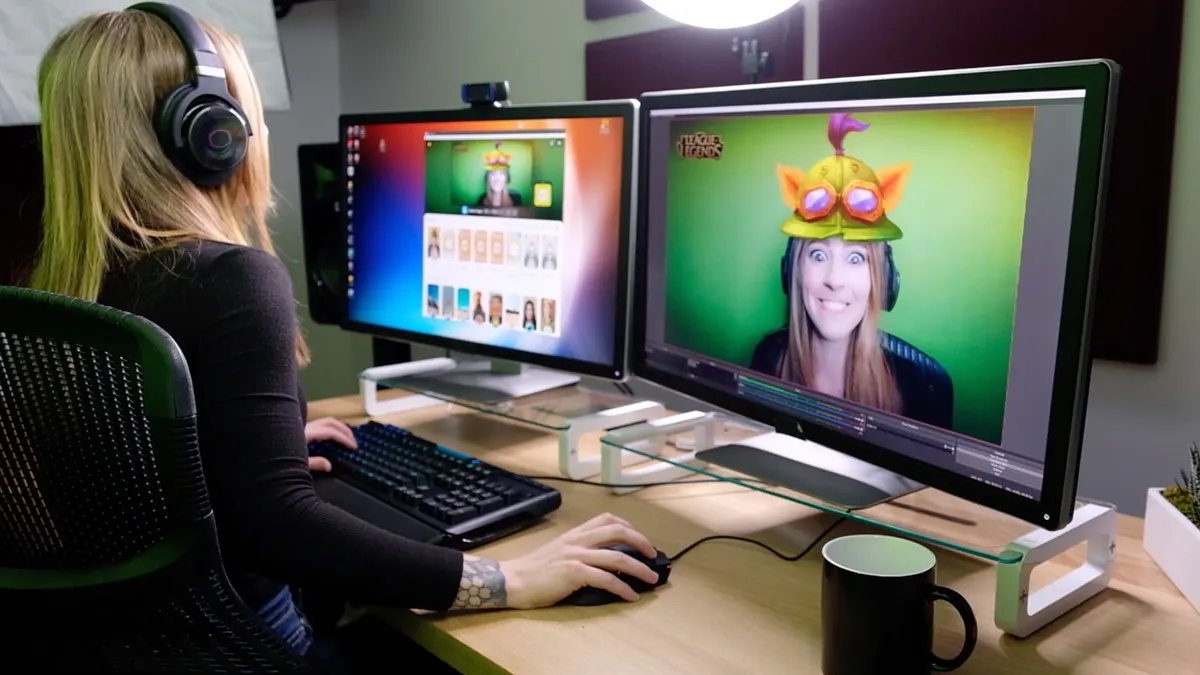Image-messaging app Snapchat has seen a surge in usage during the pandemic, notching a 37% lift in shared photos that use its camera's augmented reality (AR) lens from late March compared with late February. Time spent interacting with these lenses jumped 25% month-over-month, Snap's Head of Global AR Product Marketing Carolina Arguelles said during a webinar on April 23.
The numbers reflect how the camera's role has changed drastically over the past few decades from capturing moments for families to savor as private mementos to becoming a form of direct communication. During coronavirus-related quarantines, the trend could be accelerating as mobile consumers use their phone cameras to connect as they shelter at home. Snapchat's usage trends during the health crisis also point to valuable user engagement that brands like Coca-Cola, FabFitFun and Rituals Cosmetics seek to capture.
"The camera is the new keyboard, the new language in how you communicate with each other and access the digital world. There's no need to type when you can see," Arguelles said. "Augmented reality on Snapchat isn't experimental, it's a daily habit."
Creating cohesive campaigns
Users on the social app have boosted their playtime with sponsored lenses 18% as they turn to mobile devices for entertainment and health information during lockdowns. A new lens from the World Health Organization (WHO) uses the camera to overlay a digital circle on the ground to help users visualize the recommended distance to maintain from others. Another lens by the WHO offers animated reminders about personal hygiene during the pandemic. Both link back to the WHO's website with additional health tips, demonstrating how interactive camera lenses can engage users and draw them to an organization's website to learn more or shop.
"As the camera becomes a key part of how we live our lives and where we spend our time, brands are discovering the impactful ways they can connect with their customers and develop authentic, immersive experiences to drive their business objectives through the camera," Arguelles said.
While AR can be a powerful tool to drive interactions on mobile, brands like Rituals Cosmetics are using it as part of a broader strategy to enhance their advertising campaigns. The beauty brand's spring campaign around Hindu festival Holi included video ads across social channels and tied to Snapchat by rolling a short clip before letting users swipe up to sample an AR experience. The interactive lens showed two brand ambassadors virtually using Rituals products to clean off colorful powder that is a hallmark of Holi — reaching 1.5 million unique users and driving more than 6.2 million impressions for the cosmetics brand, per Snapchat data.
Linking the interactive experience to a cohesive campaign helped Rituals to complement its core video spot that included similar visuals and messaging, said Arguelles, who noted that swipe-up rates for sponsored lenses on Snapchat has risen 22% so far during the pandemic.
"[Users] aren't just looking at what Rituals has to say, they can experience it themselves and become a part of that story," she said. "Across all the campaigns on Snapchat that are running both video and Snap ads, we see typically a 31% increase in the reach of those campaigns that have lenses, as well as a two-times higher effectiveness for their advertising."
Not just for Gen Z
Rituals' Holi campaign targeted girls between the ages of 14 and 17, though AR and similar interactive camera tools aren't exclusive to brands looking to reach teenage consumers. Eighty percent of Snapchat's audience is over 18, according to internal data shared during the webinar.
"If you want to speak the language of Gen Z, then you better speak selfie because this truly is the camera native generation — the generation that grew up with a camera in the palm of their hand. That familiarity has made a profound difference on their comfort and ease with the camera," Arguelles said.
"The camera is the new keyboard, the new language in how you communicate with each other and access the digital world."

Carolina Arguelles
Snap, head of global AR product marketing
For now, people hunkered down at home are looking to mobile devices for entertainment, health-related information and connecting with loved ones. Group chats on Snapchat are at an all-time high, and video calls on the app rose 50% from late February to late March, internal data shows.
Platforms like Snapchat are driving an evolution in consumers' digital habits that may stick even beyond the pandemic, helping to spark interest in new camera technology and mobile ad campaigns. The next frontier for camera-powered marketing is spatial storytelling, Arguelles said.
"We are no longer just consuming linear content. The content is around us, immersing us," she said. "The reason this is important for marketers is because the camera is where people are spending time, and that number is only increasing as technology evolves and our habits change."























